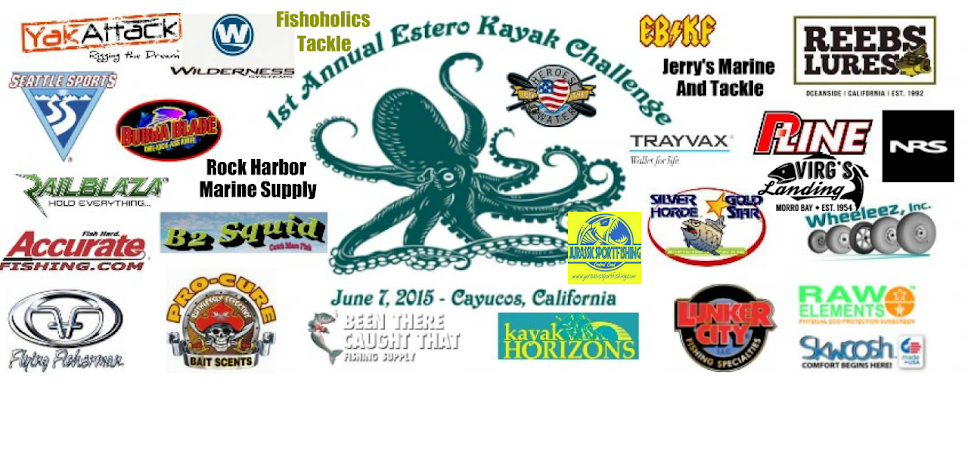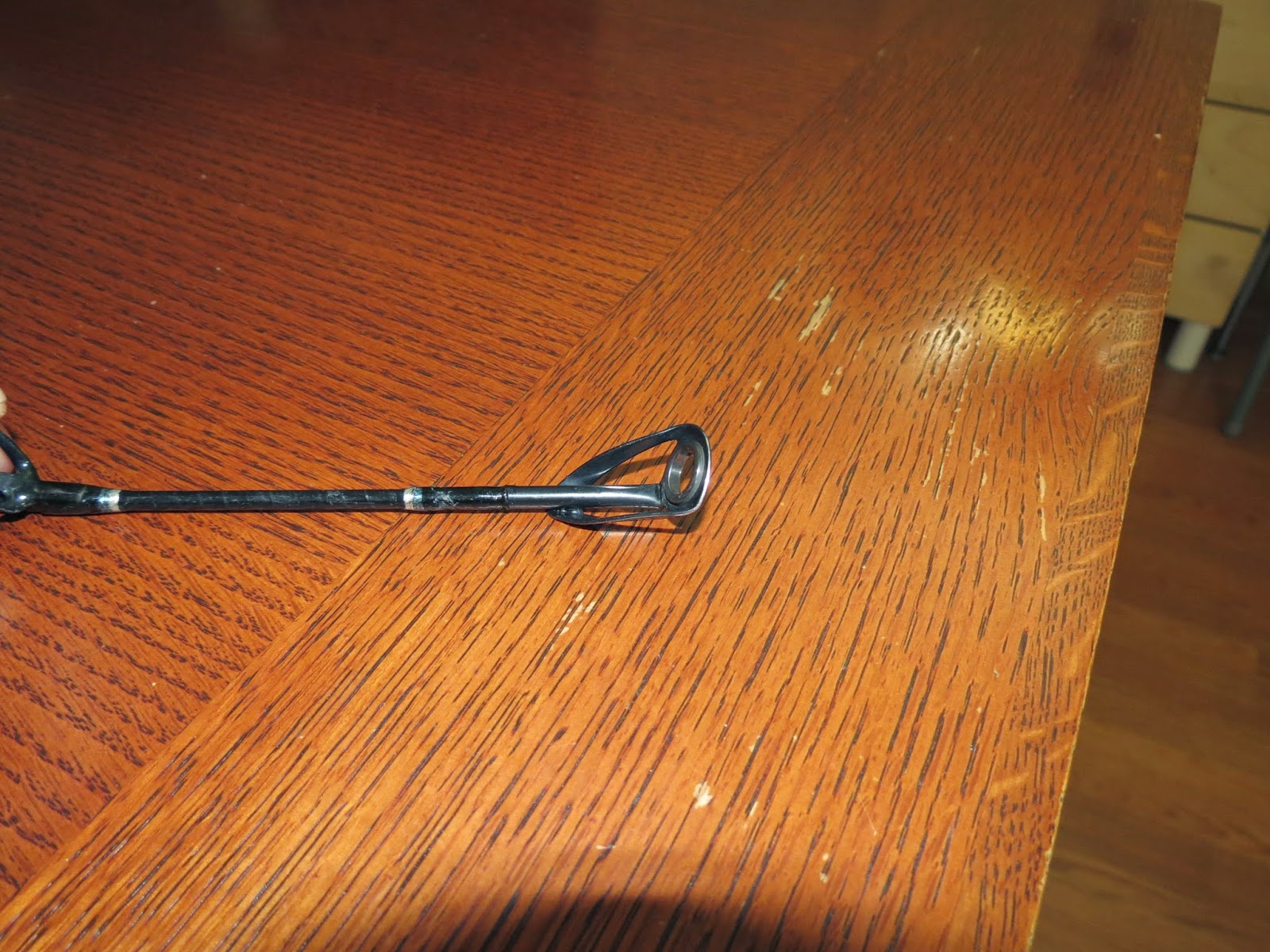Kayak Fishing Basics #2 - Choosing the right kayak
Part 1
Does this boat make me look big?
I decided to break this topic into two separate articles. Part one will address terminology and kayak types while part two will discuss purchasing considerations and buying used vs. new.
Let's get started by defining some terminology that will be helpful to know:
BEAM -- the width of a kayak or other watercraft when measured at its widest point.
BOW -- The front or forward end of the kayak or other watercraft.
CAPACITY -- The total capacity in weight that a kayak is rated to hold. This is a maximum combined weight of the paddler and any load.
COCKPIT -- the opening in the kayak deck in which the paddler sits.
DECK -- The cover or top of a kayak.
HULL -- The main body or shell of a kayak. Hulls can be made of plastic, fiberglass, Kevlar, or wood.
SCUPPER HOLE -- May be found in the seating area, footwells and tank well of SOT kayaks. These holes are self-bailing which means any water coming over the deck of the kayak will automatically drain out.
SIK -- "Sit Inside Kayak" a kayak that has a cockpit where the paddler sits inside the kayak.
SPRAY SKIRT -- a piece of waterproof material that fits around the paddler and opening of a SIK to keep water out of the craft.
SOT -- "Sit On Top" a kayak that has the cockpit molded into the top of the kayak deck. The paddler sits on top of the kayak rather than sitting inside of it.
STABILITY -- A measure of how difficult it is to capsize. Stability is broken down into two components; Primary & Secondary.
Primary Stability -- Primary stability is the relative stability of a boat that is sitting flat on the water right-side-up. A lower center of gravity and/or a wider base gives increased primary stability.
Secondary Stability -- Secondary stability comes into play when the boat is leaning toward its side. The more surface area touching the water equals better stability. Good secondary stability helps keep the kayak upright when the paddler's balance goes beyond the primary stability.
STERN -- The rear of the kayak or other watercraft.
TANK WELL -- An on deck storage area.
| TRACKING | 
-- Tracking is a description of a kayaks ability to go in a straight line without compensation from the paddler.
|
So, now that we are speaking the same language it is time to decide whether you are a SIK or a SOT paddler. That is mostly going to depend on the type of water you fish on and of course personal preference. Generally speaking, given a sit-inside-kayak (SIK) and a sit-on-top kayak (SOT) of the same length and width, the SIK will be faster and more stable. This is because the paddler in a SIK sits lower, down inside the kayak. This lowers the center of gravity making the kayak more stable and allows the hulls to be designed narrower, optimizing speed. Another benefit of SIK's is that you tend to stay drier since you sit inside the kayak. This wide open hull also provides ample room for stowing gear, although the paddler takes up much of the forward space. One undesirable characteristic of a sit-in kayak is its ability to fill with water and "swamp" or sink. Paddlers can combat this by wearing spray skirts to keep water out, but this is something that should be considered if you fish in moving water or water that is subject to big wind chop and waves.

Sit Inside Kayak (SIK) - Wilderness Systems Pungo 120
Photo credit - Wilderness Systems Kayaks
On the other side of the coin are the SOT's. They can be less stable than a SIK, since the paddler is sitting on top of the kayak. To offset this higher center of gravity many SOT's are designed with wider hulls and an unfortunate side effect of the wider hull is a decrease in speed. While this may not be a big concern if most of your fishing is near shore, it can be an issue if you need to cover a longer distance. There are times especially on the ocean where we may need to paddle 2 or 3 miles just to get out to the fishing grounds. Trust me, when faced with a long paddle sacrificing speed for a little added stability is not worth it.
Sit On Top kayak (SOT) - Wilderness Systems Ride 115X
Photo credit - Juan Veruete, Wilderness Systems Kayaks
At this point I need to clarify some points. Not all sit-on-top kayaks are wide and sluggish or narrow and tippy. The modern SOT's are designed with speed, maneuverability, tracking, and stability in mind. Some are designed to be more stable and maneuverable and offer the angler the ability to stand and fish. Others are designed with sleeker lines offering greater speed and tracking.
Photo credit - Bobby Clark, Wilderness Systems Kayaks
At this point you may be asking yourself, if SIK's are faster and more stable, why paddle a SOT? Both types of kayaks can be used as fishing platforms with varying degrees of success but for me it comes down to the versatility of sit-on-top kayaks. First and foremost, most yak anglers are fishermen first and paddlers second, and the needs of kayak anglers are different from that of recreational kayakers. Kayak fisherman need room to stow gear and yet still access rods, tackle, gear, and their catch. Since the hull of a SOT is enclosed you have an open deck which includes the seating area and also provides the angler with a lot of open area to mount items like fishing crates, rod holders, camera mounts, etc. Plus most SOT's have hatches that offer access to the enclosed hull giving you access to the interior for storing gear out of the elements. Another plus of a SOT is the ability to swing your legs over the side while fighting a fish or reaching for something in the rear tank well, this just can not be done with a SIK.

Check out that secondary stability too!
Photo credit - Dean Thomas, Wilderness Systems Kayaks
SOT's have another nice feature, scupper holes. I've talked about the possibility of SIK's filling with water if a spray skirt is not used but SOT's do not have this issue, as long as the hull is intact. The reason for this is that they are equipped with a self-bailing system that allows water to drain away from the deck via scupper holes. My personal opinion is that SOT's make the best kayaks to fish from due to their versatility, open deck space, and the ability of the paddler to move around on the kayak. While SIK's are the more traditional style and are preferred by whitewater and touring enthusiasts. For kayak anglers, SOT's are by far the more popular style.
Finally, before deciding on any style, brand, or model try to get out and paddle as many kayaks as you can. The more you paddle, the more you will learn, and soon you will discover what YOUR perfect kayak is. In part two of this series I will talk about this, "test driving" kayaks and I will also discuss the pros and cons of going with a used kayak or dropping some coin on a brand new model.
Until then, get out there and fish!
Cheers, Tebbs
 What would be the "perfect" kayak rod? Does it need to float or have some kind of tether attachment point? Talking specifically about rod layout (grips, reel seat, weight, length, etc.) and taking power, action, line and lure weight out of the equation. My thought is that a rod can be built to fit different styles of fishing and actions but what features would make a rod a specific "kayak" rod?
What would be the "perfect" kayak rod? Does it need to float or have some kind of tether attachment point? Talking specifically about rod layout (grips, reel seat, weight, length, etc.) and taking power, action, line and lure weight out of the equation. My thought is that a rod can be built to fit different styles of fishing and actions but what features would make a rod a specific "kayak" rod? 

















.png)




















.png)










